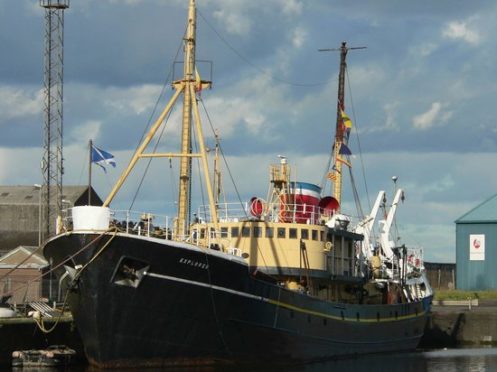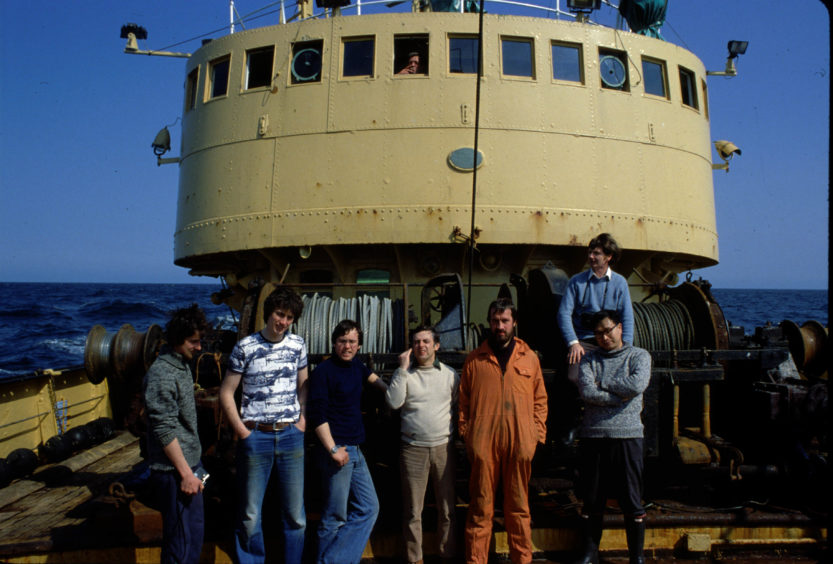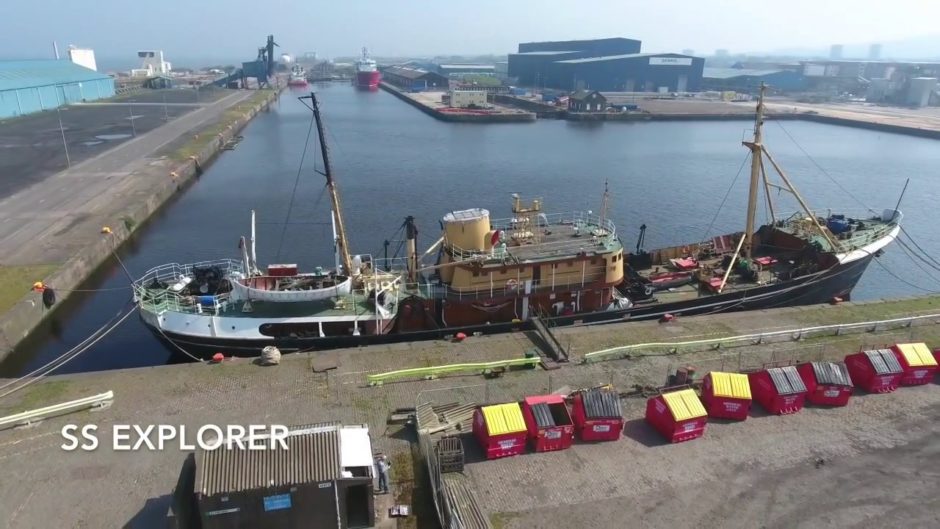It was the pioneering vessel which sailed from Aberdeen into the Arctic Circle, equipped with one of Scotland’s first computers.
And now, the SS Explorer, a piece of the Granite City’s proud maritime past, has gained a prestigious accolade from a national organisation.
The SS Explorer Preservation Society, based in Leith, has been recognised with a regional flagship award in the National Historic Ships UK competition, paying tribute to the work which is being done to refurbish the vessel, which was involved in some important, but hazardous missions in the 1950s.
Allan Dickson, its deputy chairman, told the Press and Journal: “This is the first time that the SS Explorer has been able to enter the competition and we are really happy to have been named as a regional flagship.
“It’s a great piece of recognition and we are looking forward to working with National Historic Ships UK during the year in promoting the country’s heritage vessels.”
The awards were open to all vessels on the historic ship register and judged on how they had adapted to the current lockdown and their online and virtual programme of events.
Aberdonian John Dunn recalled the time when he worked as a marine scientist on the SS Explorer, travelling from the north-east into the wilderness of the Arctic Circle.
On one occasion, he journeyed from Aberdeen to the White Sea in Russia – a round trip which took him and his colleagues no less than eight weeks.
Even now, at 72, the man who spent 49 years making fresh marine discoveries is convinced that the Explorer, which was built in Aberdeen by Alexander Hall’s, is a “unique time capsule” from the past.
When it was originally launched in 1955, the ship had one of only four computers in the Granite City on board – “a massive machine which filled a whole cabin and became incredibly hot” – and it pioneered underwater television in the industry.
Mr Dunn said: “She is one of a kind and was built up to a standard, not down to a cost. The importance of the work carried out on the Explorer cannot be overstated.
“It investigated fish breeding, feeding grounds, stock assessment and the Marine Laboratory in Aberdeen learned so much from these voyages.
“The extra strengthening of the hull also prepared her for service in the Arctic waters off Greenland and Iceland, and the Barent and White Seas, north of Russia.”
Mr Dunn, who was made an MBE for marine science and education, revealed some of the more unusual ways that the SS Explorer recruited new crew members.
He said: “The government never paid the men very well, so we had difficulty hiring folk in the 1960s who wanted to go on a steam trawler.
“But we occasionally found people from Craiginches Prison in Aberdeen who were reaching the end of their sentence and this was a good way of them getting some NI stamps, rather than employers wondering why they had been on a long holiday.
“Sometimes, they would arrive on board with just a case to their name. And nothing else. But there was something about the Explorer and they took pride in their work.”
Although it is currently docked in the central belt, Mr Dunn believes that the vessel should eventually be brought back to Aberdeen.
He said: “The Maritime Museum was interested, but there just wasn’t the money and the ship ended up in the Cromarty Firth in the 1990s, where it was vandalised, had parts stolen, and was at risk from the weather.
“She deserves a lot better and is the last of a kind from Aberdeen. I can’t be the only person who thinks it would be fitting if she returned to the city where she was built.”
Further information and a virtual tour of the SS Explorer can be found at


